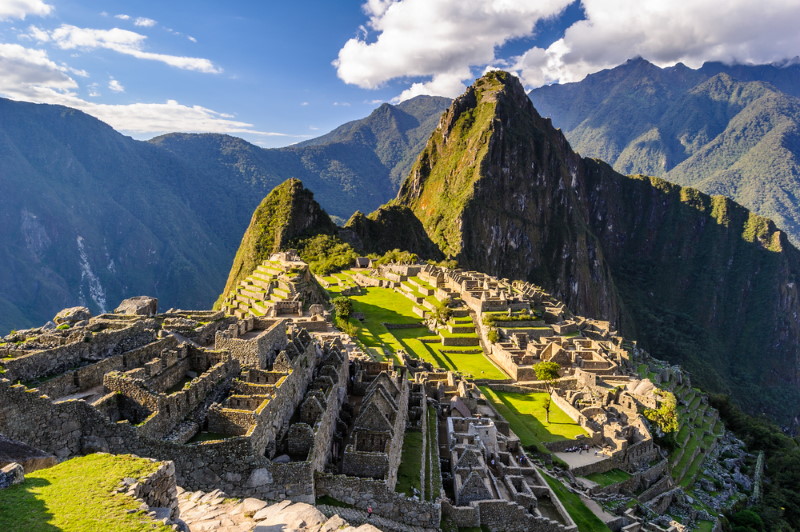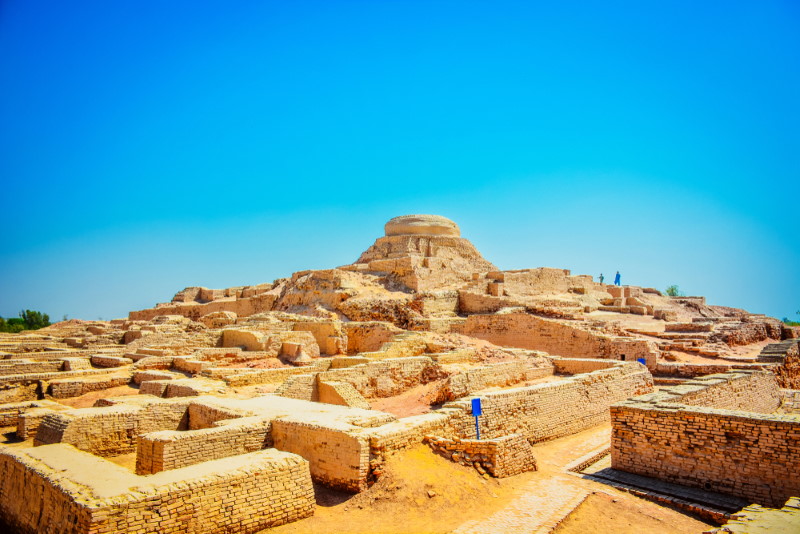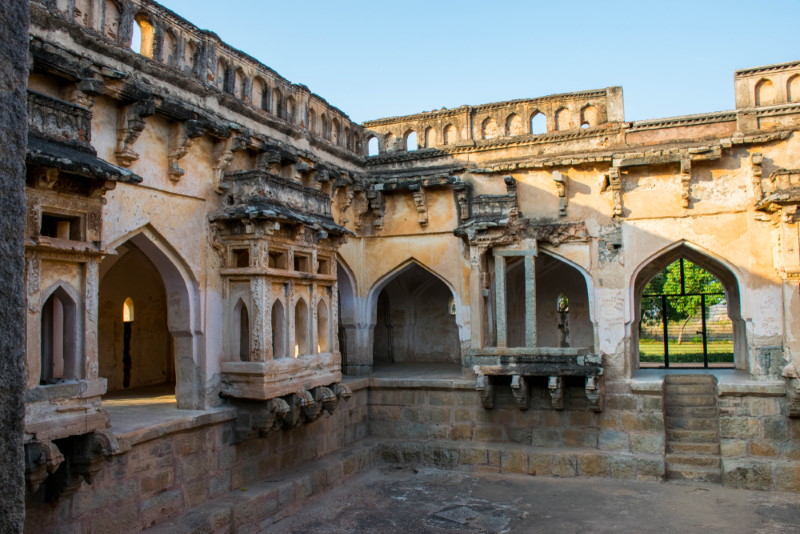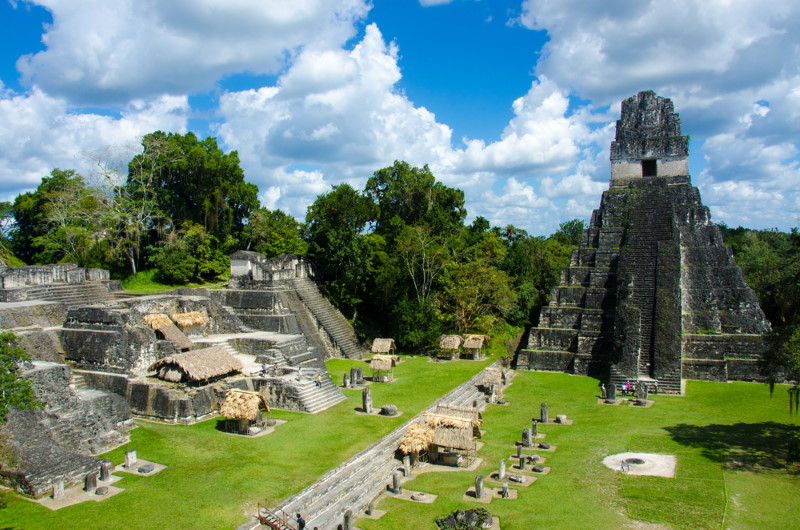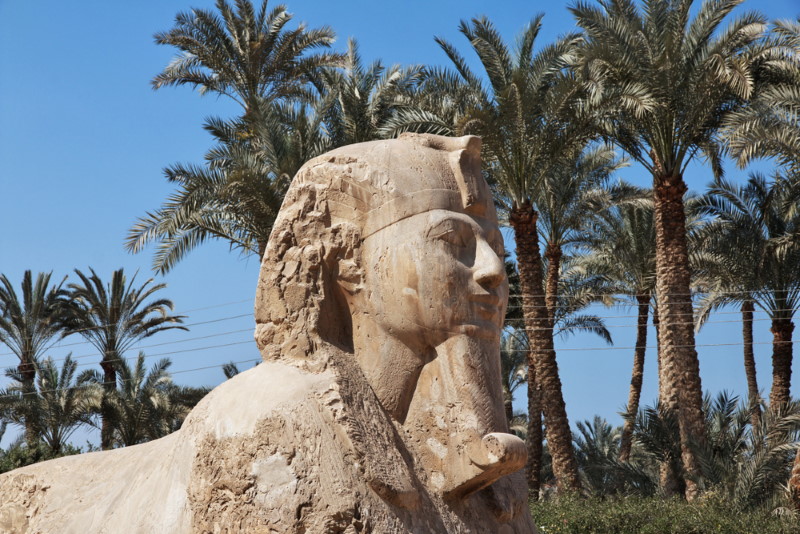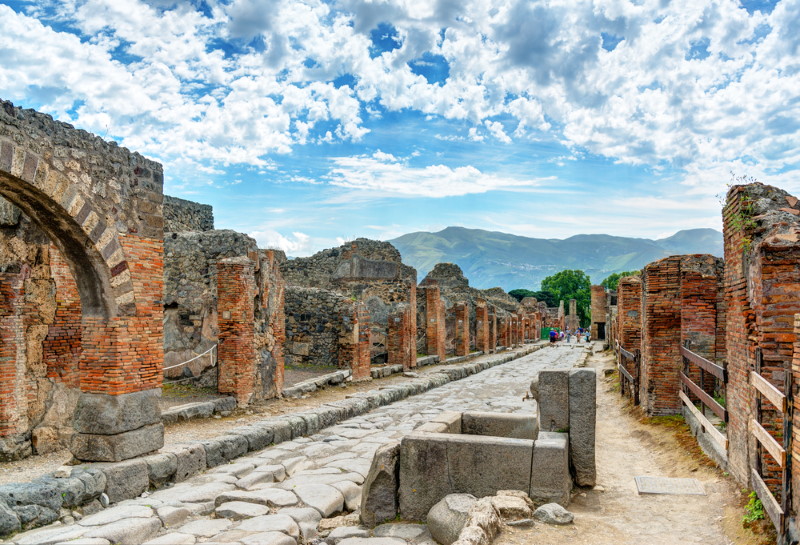Atlantis, Camelot, Babylon, El Dorado: these are the types of places that may spring to mind when you hear talk of ‘lost cities’. Although there is no strong evidence that they existed outside of legends and allegorical tales, these places still have their places in history and culture. However, there are many civilisations which have been lost to the fabric of time. Whether they were abandoned, destroyed or simply forgotten, these lost cities really did once exist.
10. Mohenjo-daro (Pakistan)
Mohenjo-daro is located in the province of Sindh, Pakistan. The modern name for the site simply means Mound of the Dead in Sindhi as the city’s original name is unknown. However, analysis of a Mohenjo-daro seal suggests a possible ancient name: Kukkutarma, the city of cockrel. Cock-fighting may have had ritual and religious significance for the city with domesticated chickens bred there for sacred purposes. Rather than being used as a source of food, they could have once been a point of diffusion for the eventual worldwide domestication of chickens. This city was built in the 26th century BCE and was one of the largest cities of the ancient Indus Valley Civilization. At its height, the Indus Civilization spanned much of what is now Pakistan and North India with Mohenjo-daro being one of its major cities. Mohenjo-daro was also the most advanced city of its time, with remarkably sophisticated civil engineering and urban planning. Unlike most other sites, there is no obvious palace or temple complex. This has led some to consider the Indus Valley civilization as egalitarian, but very little is known of the people who lived at Mohenjo-daro so such a statement is bold. Flooding of the Indus appears to have destroyed the city at least six times and new cities were built directly on top of the ruins of the previous ones. What caused the final abandonment is not clear but it is believed that when the Indus civilization went into sudden decline around 1900 BCE, Mohenjo-daro was abandoned.
9. Vijayanagar (India)
Vijayanagar, the capital of one of the largest Hindu empires ever, was founded by Sangama dynasty princes Harihara and Bukka in 1336. Most of the city lies on the south bank of the Tungabhadra River. The city was built around the religious center of the Virupaksha temple complex and covers 650 km2 (250 sq mi). Vijaynagar had 500,000 inhabitants, making it at the time the second largest city in the world after Peking-Beijing and twice the size of Paris. The name translates as ‘City of Victory’ from vijaya (victory) and nagara (city). As the prosperous capital of the largest and most powerful kingdom of its time in all of India, Vijayanagara attracted people from all around the world. The city flourished between the 14th century and 16th century, during the height of the power of the Empire. During this time, the empire was often in conflict with the Muslim kingdoms which had become established in the northern Deccan. In 1565, the empire’s armies suffered a massive and catastrophic defeat at the hands of an alliance of the sultanates and the capital was taken. The victorious Muslim armies then proceeded to raze, depopulate and destroy the city along with its Hindu temples and icons over a period of several months. Although the empire still existed thereafter, the original capital was never reoccupied.
8. Angkor (Cambodia)
Angkor served as the seat of the Khmer empire which flourished from approximately the 9th century to the 15th century. More precisely, the Angkorian period may be defined as the period from 802 AD – when the Khmer Hindu monarch Jayavarman II declared himself the “universal monarch” and “god-king” of Cambodia – until 1431 AD, when Thai invaders sacked the Khmer capital and caused its population to migrate south to the area of Phnom Penh. The word Angkor simply means city. The ruins of Angkor are located amid forests and farmland to the north of the Great Lake and south of the Kulen Hills. The temples of the Angkor area number over one thousand, ranging in scale from nondescript piles of brick rubble scattered through rice fields to the magnificent Angkor Wat, said to be the world’s largest single religious monument. The city was to bear testimony to the Khmer empire’s immense power and wealth, impressive art and culture, architectural technique and aesthetic achievements as well as the variety of belief systems that it patronised over time. In 2007, an international team of researchers using satellite photographs and other modern techniques concluded that Angkor had been the largest pre-industrial city in the world with an urban sprawl of 1,150 square miles. Its closest rival was 50 square miles. The fall of Angkor brought about the end of the Khmer Empire.
7. Tikal (Guatemala)
The ruins of the ancient city Tikal are found in the rainforests of Guatemala. Tikal was the capital of a conquest state that became one of the most powerful kingdoms of the ancient Maya and a major city of the New World. Though monumental architecture at the site dates back as far as 4th century BC, Tikal reached its peak during the Classic Period of 200 to 900 AD. During this time, the city dominated much of the Maya region politically, economically, and militarily, while interacting with areas throughout Mesoamerica. Thanks to the almost perfect preservation of the city, much is known about the grandeur of Tikal at its height as well as the powerful kings who ruled there. While the site is sometimes, like other New World ruins, listed as ‘mysteriously’ abandoned, research is showing that the land could not support the large number of people once congregating in the city. Abandonment occurred over a number of years and the city was left for the jungles to grow over. It seems, however, that some locals knew of its existence during those years as rumors of a lost city in the area persisted. The first organized expedition found the city in 1848. What they found was one of the largest surviving New World archaeological sites. There are pyramids up to 70m high, royal palaces, monumental stele and a playing arena for the Mayan ball game.
6. Troy (Turkey)
“Sing, O Muse, the anger of Achilles son of Peleus…” So begins the Iliad of Homer, the foundation text of western literature. For all the importance placed in the Iliad, it was for a long time thought that Troy was as mythical as Atlantis. In 1871, a self-taught classicist, Heinrich Schliemann, funded a dig at a mound in Hissarlik. This was the site where an ancient city called Ilium (named for the Iliad) had once stood. They found huge defensive walls of the type described by Homer and discovered golden jewellery which Schliemann displayed as the ‘jewels of Helen’. Modern excavations of the site have revealed the city to be large enough to be the basis of the ancient legend. Ongoing excavations discovered that it was founded in around 3000 BC and destroyed multiple times. Each new city was built on the ruins of the last. The ruins are situated in northwest Anatolia in what is now Turkey. There is a lively debate as to which of these layers might relate to the city besieged by the Greeks. Interestingly, the mighty walls of the city would have far outstripped any siege weaponry available to the attackers at the time and therefore any siege would be protracted. This is just what the Iliad describes and explains the need for the trickery of the Trojan Horse.
5. Pavlopetri (Greece)
The most unique city on our list, Pavlopetri sank into the ocean many, many moons ago. Scientists have tried to determine how and why this occurred, but are yet to find a definite answer. The city of Pavlopetri is off the coast of southern Laconia in Peloponnese, Greece, and is about 5,000 years old – making it one of the oldest submerged archaeological town sites. Some experts believe that the town was submerged around 1000 BC by the first of three earthquakes that the area suffered from. However, the fact that the site is submerged has given archaeologists a fortuitous and unique insight into life at the time. Other sites have been built over, plundered for building material or ploughed over by farmers, but Pavlopetri is uncontaminated. Although eroded over the centuries, the town layout is as it was thousands of years ago. However, the site is now under threat from modern perils like damage by boats dragging anchors as well as by tourists and souvenir hunters so it is now a part of the underwater cultural heritage as defined by the UNESCO. This is specifically designed to prevent the destruction or loss of historic and cultural information and looting. Through ongoing research it has been discovered that the city was the centre of a thriving textile industry.
4. Memphis (Egypt)
Memphis was the ancient capital of Aneb-Hetch, the first nome of Lower Egypt. Its ruins are located near the town of Mit Rahina, 20 km (12 mi) south of Cairo. According to legend related by Manetho, the city was founded by the pharaoh Menes who united the two kingdoms of Egypt. The capital of Egypt during the Old Kingdom, Memphis remained an important city throughout ancient Mediterranean history. Its Ancient Egyptian name was Ineb Hedj (“The White Walls”) and the name “Memphis” is the Greek derivative of the Egyptian name of Pepi I’s (6th dynasty) pyramid, Men-nefer, which became Menfe in Coptic. Memphis had some 30,000 inhabitants and was by far the largest settlement worldwide from the time of its foundation until around 2250 BC. It reached a peak of prestige under the 6th Dynasty as a centre of the cult of Ptah. It declined briefly after the 18th Dynasty with the rise of Thebes and was revived under the Persian satraps before falling firmly into second place following the foundation of Alexandria. Under the Roman Empire, Alexandria remained the most important city and Memphis remained the second city of Egypt until the establishment of Fustat in 641. It was then largely abandoned and became a source of stone for the surrounding settlements. It was still an imposing set of ruins by the 12th century but soon became little more than an expanse of low ruins and scattered stone.
3. Petra (Jordan)
Petra is a historical and archaeological city in the southern Jordanian governorate of Ma’an that is famous for its rock-cut architecture and water conduit system. Another name for Petra is the Rose City due to the colour of the stone out of which it is carved. The inclusion of Petra may prove controversial as one can question whether it was really lost. It was certainly abandoned, but was still probably very well known to locals. However, it was lost from Western knowledge for at least a thousand years and it is too fascinating not to include. The city in the desert flourished until an earthquake destroyed the vital water system. With other cities available, it seems it was easier to just abandon the site than rebuild. From then the site was left to the desert, attracting only curious travelers and grave robbers. Now it is one of the great archaeological sites in the Middle East. The city is half built and half carved from the red rocks of the hills it inhabits. The architecture is a fusion of Roman, Greek and native Nabataeans. Petra declined rapidly under Roman rule, in large part from the revision of sea-based trade routes. In 363 an earthquake destroyed many buildings and crippled the water system. The last inhabitants abandoned the city (further weakened by another major earthquake in 551) when the Arabs conquered the region in 663.
2. Pompeii (Italy)
The city of Pompeii was an ancient Roman town-city near modern Naples in the Italian region of Campania. Researchers believe that the town was founded in the seventh or sixth century BC. It came under the dominion of Rome in the 4th century BC and was conquered and became a Roman colony in 80 BC after it joined an unsuccessful rebellion against the Roman Republic. The city thrived and, 160 years later, its population was approximately 11,000 people. The city had a complex water system, an amphitheatre, gymnasium and a port. But that all changed on 24 August year 79 AD. Along with Herculaneum, Pompeii was destroyed and completely buried during a catastrophic eruption of the volcano Mount Vesuvius. The volcano collapsed higher roof-lines and buried Pompeii under many meters of ash and pumice. After thick layers of ash covered the two towns, they were abandoned and eventually their names and locations were forgotten – remaining lost for nearly 1700 years. The first time any part of them were unearthed was in 1599 when the digging of an underground channel to divert the river Sarno ran into ancient walls which were covered with paintings and inscriptions. Excavations have provided an extraordinarily detailed insight into the life of a city at the height of the Roman Empire. Pompeii has been a tourist destination for over 250 years and, today, it is one of the most popular tourist attractions of Italy with approximately 2.5 million visitors annually.
1. Machu Picchu (Peru)
Machu Picchu is a 15th-century Inca site located 2,430 metres (7,970 ft) above sea level. Often mistakenly referred to as the “Lost City of the Incas”, it is the most familiar icon of Inca civilization. The Incas built the estate around 1450 but abandoned it a century later at the time of the Spanish Conquest. Many believe it is possible that most of its inhabitants died from smallpox introduced by travellers before the Spanish conquistadors arrived in the area. Although the citadel is located only about 50 miles from Cusco (the Inca capital), it was luckily never found and therefore not destroyed by the Spanish – a fate suffered by many other Inca sites. Over the centuries, the surrounding jungle grew to enshroud the site, and few knew of its existence. Known only locally, it remained a mystery to the outside world before it was brought to international attention in 1911 by the American historian Hiram Bingham. During Bingham’s archaeological studies, he collected various artifacts which he took back to Yale. One of the more prominent artifacts he recovered was a set of ceremonial Incan knives made from bismuth bronze. These knives were molded in the 15th century and are the earliest known artifacts containing this alloy. Since then, Machu Picchu has become the largest tourist attraction in South America. Most of the outlying buildings have been reconstructed in order to give tourists a better idea of what the structures originally looked like.

